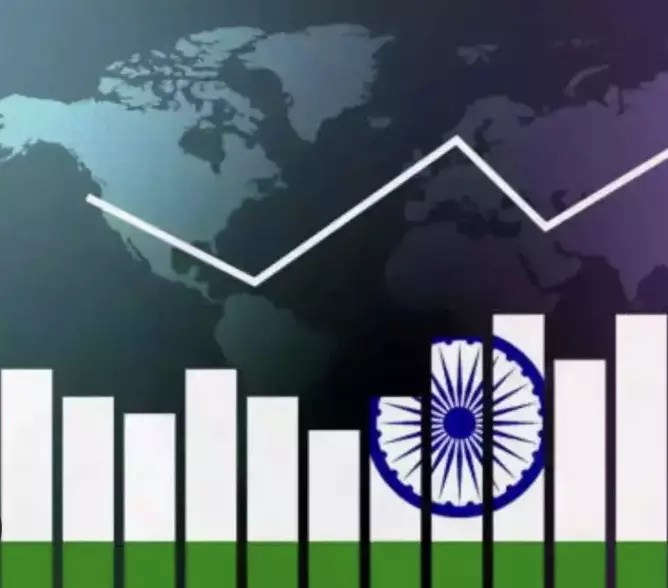Economy to grow at 6.5% in FY25 amid global uncertainties: Government
Economy to grow at 6.5% in FY25 amid global uncertainties: Government

India's economy is projected to grow around 6.5 percent in the fiscal year 2024/25, at the lower end of the government’s 6.5-7 percent forecast, due to global uncertainties affecting domestic growth, according to a government report.
The finance ministry’s monthly economic review, released on December 26, highlighted that the growth outlook for the second half of the fiscal year (October to March) appears brighter. This optimism is supported by resilient rural demand and an uptick in urban demand in the first two months of the quarter.
Growth Performance
The report noted that India’s real GDP grew by 5.4 percent in Q2 of FY25 and 6 percent for the first half (H1) of FY25. The slowdown was primarily seen in certain manufacturing sectors. On the demand side, private final consumption expenditure (PFCE) at constant (2011-12) prices increased by 6 percent in Q2, leading to a 6.7 percent growth in H1. Consumption's share in GDP (at current prices) rose from 60 percent in H1 of FY24 to 61.2 percent in H1 of FY25.
Despite challenges, India aims to maintain its growth rate at a world-leading pace of 6.5-7 percent. The growth outlook is expected to be better in the second half of the fiscal year compared to the first half.
Inflation Trends
Retail inflation eased to 5.5 percent in November 2024 from 6.2 percent in October 2024, driven by lower food and core inflation. Food inflation moderated to 9 percent in November from 10.9 percent in October, mainly due to a drop in vegetable prices, though it remains in double digits.
Government measures, such as preventing the hoarding of major pulses and subsidizing pulse sales under the Bharat brand, helped reduce pulses inflation by 200 basis points to 5.4 percent in November. However, the inflation rate in ‘oils & fats’ increased from 9.6 percent in October to 13.3 percent in November, reflecting global inflation trends in vegetable oils.
Inflation in the fuel & light group remained in the deflationary zone for the 15th consecutive month. Core inflation slightly eased to 3.7 percent in November 2024. Overall, headline inflation for FY25 (April-November) was 4.9 percent, lower than the 5.5 percent recorded in the same period the previous year. Core inflation stood at 3.4 percent, 1.4 percent lower than the previous year, though food inflation increased to 8.3 percent from 6.9 percent in FY24 (April-November).
Outlook for H2 FY25
The government report suggests that the growth outlook for the second half of FY25 is more promising than the first half. While structural factors may have contributed to the slowdown in H1, the combination of monetary policy stance and macroprudential measures by the central bank likely played a role in the demand slowdown.
Rural demand remains strong, as evidenced by a 23.2 percent increase in two & three-wheeler sales and a 9.8 percent rise in domestic tractor sales in October-November 2024. Urban demand is also picking up, with passenger vehicle sales showing a year-on-year growth of 13.4 percent and domestic air passenger traffic experiencing robust growth. As a result, the economy is expected to grow around 6.5 percent in real terms in FY25.
Projections for FY26
Looking ahead to FY26, the government warns of emerging uncertainties. Global trade growth is becoming more uncertain, and elevated stock markets continue to pose significant risks. The strength of the US dollar and potential changes in US policy rates are putting pressure on emerging market currencies. These factors contribute to a cautious outlook for the next fiscal year.

